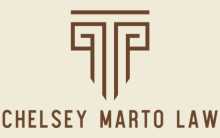After you are convicted and have either pursued a direct appeal or waived the right to pursue a direct appeal, the next step in challenging the conviction is pursuing a post-conviction relief action. If successful in this action, your conviction and sentence can be vacated. This means that your convictions are essentially erased, and you are placed back in the same position you were in while the charges were pending. You are then able to retry your case at trial, enter plea negotiations with the State, or the State may elect to drop the charges.
The post-conviction relief process is governed largely by the Uniform Post-Conviction Procedures Act, S.C. Code Ann. § 17-27-10 et seq. The post-conviction relief action begins when the convicted person files a post-conviction relief application. Included in the application are the allegations you claim warrant relief. Though there are limited exceptions, this application typically needs to be filed within a year of the issuance of the remittitur from the direct appeal or the conclusion of the circuit court matter, whichever is later. These claims typically consist of a claim of ineffective assistance of counsel, prosecutorial misconduct, or newly discovered evidence. This application can be amended liberally throughout the process. You are not bound by the allegations raised in the initial application.
After the application is filed, the State will file a return to the application a couple months later. Occasionally, discovery or other pre-evidentiary hearing matters are handled after the return is filed. The State may occasionally move to dismiss the application without a hearing in certain circumstances including if it is not timely filed, if the claims are not facially plausible, and if you have already had a PCR action on the same charges before. So long as it is not dismissed without a hearing, the matter will proceed to an evidentiary hearing.
An evidentiary hearing is basically a trial without a jury. The hearing starts with the State reciting the procedural history. Thereafter, testimony is given and, depending on the judge, the parties give a brief closing argument. Testimony is often given by the applicant, the trial counsel, the appellate counsel, and/or the prosecutor. The applicant’s family members sometimes also testify if they have knowledge of facts relevant to the allegations. The applicant bears the burden of proving that they are entitled to relief based on the allegations raised. The judge typically takes the matter under advisement and issues a ruling. Once a ruling is issued, a formal, written order is issued. After this order is filed, the decision is typically appealed, regardless of which side won. If you are interested in this type of representation, the Law Office of Chelsey F. Marto is happy to represent you. Please contact us for a consultation regarding your case.
